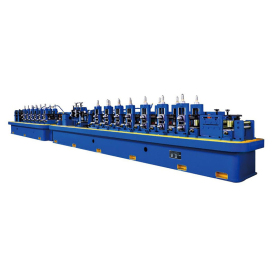Understanding High-Impedance Impedors: Their Role in Modern Electronics and Innovative Applications in Signal Processing
In the expansive world of electronics, the concept of impedance is critical in determining how circuits function. Among the various types of impedors, high-impedance impedors stand out due to their unique characteristics and invaluable applications in diverse fields ranging from signal processing to medical electronics. High-impedance impedors are elements designed to present a high resistance to any alternating current (AC) or direct current (DC) that flows through them, allowing for minimal current draw, and making them essential in measuring tiny signals without significantly altering the conditions in which they operate.
Basics of Impedance and Impedors
To understand high-impedance impedors, we must first clarify what impedance is. Impedance combines resistance, capacitive reactance, and inductive reactance — it is essentially the total opposition a circuit presents to current. In practical terms, impedors used in electronic circuits can be resistors, capacitors, inductors, or even more sophisticated combinations of these elements. High-impedance impedors typically have an impedance greater than 1 MΩ (mega-ohm) and serve to minimize the loading effect on sensitive outputs.

Understanding High-Impedance Impedors: Their Role in Modern Electronics and Innovative Applications in Signal Processing
Characteristics of High-Impedance Impedors
High-impedance impedors are primarily characterized by their high resistance value, which significantly impacts their performance in various applications:
1. **Low Signal Loading**: High-impedance impedors draw very little current from the circuit, which is vital in applications involving sensitive signal sources like sensors or photodetectors. This feature allows the source to maintain its output voltage without experiencing significant drops caused by the load.
2. **Noise Minimization**: Due to their ability to maintain signal integrity, high-impedance impedors help reduce noise in measurement systems. By not significantly altering the characteristics of the circuit they monitor, they prevent the introduction of interference that could mislead data representation or processing.
3. **Frequency Response**: High-impedance impedors tend to be frequency-dependent. Their behavior can vary across different frequency ranges, influencing how well they perform in applications involving alternate current signals.
Applications of High-Impedance Impedors
The applications of high-impedance impedors are vast and complex:
– **Measurement and Instrumentation**: In the realm of instrumentation, high-impedance impedors are crucial for voltmeters and oscilloscopes. They allow for accurate measurements of high-impedance circuits without drawing additional current and affecting the readings.

Understanding High-Impedance Impedors: Their Role in Modern Electronics and Innovative Applications in Signal Processing
– **Audio Systems**: In audio electronics, high-impedance inputs are used in preamplifiers and mixers to connect to microphones and other audio sources. A high-impedance impedor ensures that minimal signal loss occurs when interfacing between devices, preserving audio fidelity.
– **Medical Devices**: Numerous medical instruments, especially those involved in electrophysiological measurements (like ECG or EEG), depend on high-impedance impedors to monitor electrical signals from the human body without interfering with the natural signals.
– **Data Acquisition Systems**: High-impedance inputs are favored in data acquisition systems to allow for accurate sampling of signals, particularly in applications where the signal magnitude is low and comes from high-source impedance devices like sensors.
Design Considerations
While high-impedance impedors offer numerous advantages, several design considerations are essential when integrating them into a system:
– **Input Impedance Matching**: To maximize signal transfer and minimize reflection, it’s important to consider impedance matching between the source and the load. Mismatched impedances can lead to reduced efficiency and signal distortion.
– **Environmental Factors**: High-impedance circuits can be sensitive to environmental factors such as temperature changes and electromagnetic interference. It is essential to shield sensitive connections and utilize appropriate housing to protect against such influences.
– **Component Quality**: The quality of components used in the assembly can greatly affect performance. High-tolerance and low-noise components are preferable.
Conclusion

Understanding High-Impedance Impedors: Their Role in Modern Electronics and Innovative Applications in Signal Processing
High-impedance impedors are fundamental components in modern electronic design and applications. Their ability to maintain signal integrity while minimizing the effects on the source circuitry makes them indispensable in various fields, from consumer electronics to healthcare technologies. Understanding the principles behind their operation and applications helps engineers and technicians design more effective, efficient, and robust electronic systems. As technology evolves, the role of high-impedance impedors will only become more critical, propelling innovations in how we capture and process electronic signals.High-Speed Flying Saw Machine

